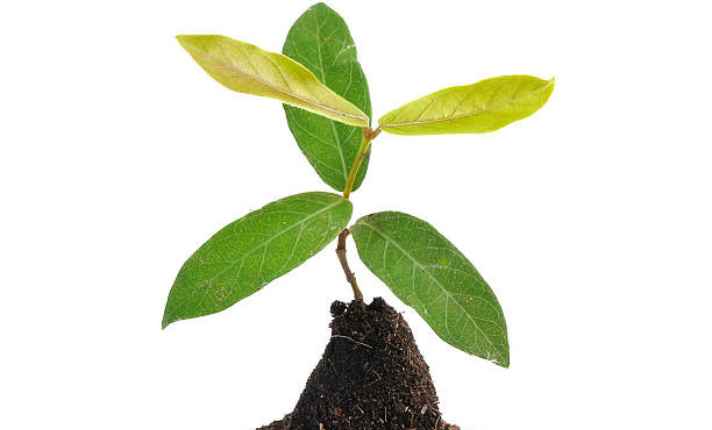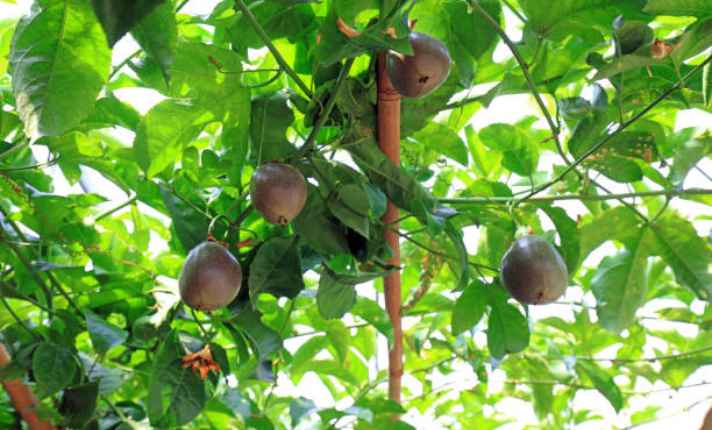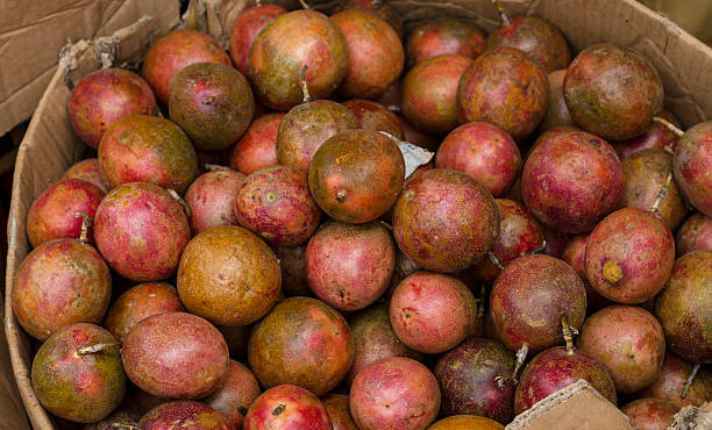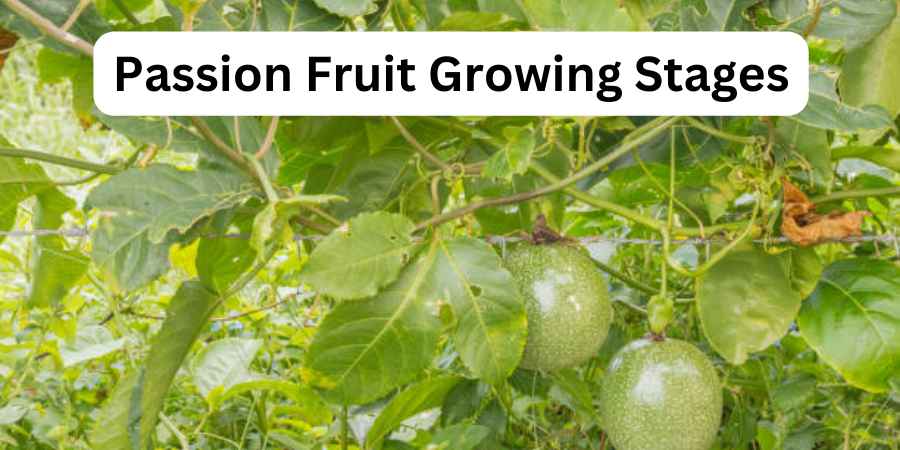Last Updated on June 20, 2025 by Jocelyn
Passion fruit progresses through several growth stages. Germination usually takes two to four weeks. Next comes vegetative growth, where vines and leaves form.
Around five to seven months after planting, flowers appear. After pollination, the fruit develops and ripens within sixty to ninety days. It turns from green to purple or yellow depending on the variety.
Passion fruit vines are great for small spaces like patios or balconies. Choose either purple Passiflora edulis or golden Passiflora flavicarpa.
Start seeds in spring with well-draining soil. Add a trellis early to support vertical growth. Keep the plant in a warm area, safe from frost.
Prune to shape the plant and improve airflow. Bees help with pollination, which increases fruit set. Water when the soil feels dry to the touch. With the right setup, the plant produces fruit with a fresh, tropical flavor.
Table of Contents
Toggle7 Passion Fruit Growing Stage
Understanding the different stages of passion fruit growth is essential for successful cultivation.
From planting the seeds to harvesting the ripe fruits, each stage requires specific care and attention to ensure a healthy and productive plant.

Below, we will explore each phase in detail to help you achieve the best results.
1. Seed Germination
To start growing passion fruit, bury the seeds just below the surface of a seed-raising mix in a container. Keep the soil moist with water and a bit of seaweed solution. This helps the seeds sprout faster.
Temperature and humidity are crucial for good germination. Keep your seeds warm, ideally between 68-77°F (20-25°C), and ensure the air stays humid.
Techniques like soaking the seeds overnight or scarification (scratching the seeds’ surface) can speed up germination rates by helping water penetrate the seed shell more easily.
2. Seedling Growth
Seedling Growth requires precise care. Initially, keep the soil moist and provide bright, indirect light to prevent leaf burn. Early feeding with a balanced fertilizer strengthens the seedlings.
When seedlings grow their third true leaf, it’s time to transplant. Choose a sunny spot with room for roots to expand. Ensure gentle handling to avoid root damage.
Provide a trellis early for support, essential for their climbing nature and later fruit production.

3. Vine Development
In spring, passionate fruit vines need deep watering 1-2 times per week to support their growth. As the main stem grows tall, it’s crucial to use poles or wire fencing for vertical support. This helps the vine stay upright and reach for the sun.
During summer, fertilizing is key. A balanced organic fertilizer enriches the soil, boosting the vigor of the plants. Space the fertilizing sessions to give nutrients time to absorb.
Pruning shapes the vines, enhancing air circulation and reducing diseases like anthracnose.
4. Flowering Stage
When day lengths and soil temperatures are right, passion flowers start to bloom. They appear on stalks at branch tips and leaf axils.
These flowers depend on pollinators like bees and hummingbirds. Without their visits, there won’t be any fruit set. Frost can damage the blossoms, so they need protection.
Growing conditions are critical. Passion fruit vines require well-drained soil and steady irrigation. Using mulch helps keep the soil moist and warm.
Regular pruning is important too. It clears away damaged blossoms and excess vines, improving nutrient distribution and sunlight access, which boosts fruit production.
About 2 months after pollination, whether by natural pollinators or an artist’s brush, the oval fruits start to develop. The climate and cultural factors greatly affect the vines’ growth and yields. Fertility and pollination methods are especially crucial.

5. Fruit Development Stage
When passion fruit begins to grow, it moves from flowering to the fruit development stage. This stage is critical as the flowers turn into tiny green fruits.
These fruits gradually grow bigger and start to show their purple or yellow final color.
During this period, ensuring the plant gets enough water and sunlight is crucial. Regular watering helps the fruits develop well without splitting. Additionally, a well-balanced fertilizer supports this growth phase.

6. Ripening Stage
In the ripening stage, passion fruits undergo noticeable changes. They start to shift in color from green to either purple or yellow.
Their skins develop a wrinkly texture, signaling readiness. It’s essential to let them ripen fully on the vine. If picked too soon, they lack sweetness.
Weather impacts ripening significantly. Sunny, warm days accelerate the process, while rain can delay it and potentially cause rot.
Monitoring these environmental factors closely ensures you harvest the fruit at its peak flavor. Patience during this stage pays off with deliciously sweet fruit.

7. Harvesting Stage
In a tropical climate, passion fruit vines flourish, offering fruit year-round with good care. During the flowering season, brightly colored flowers signal the start of fruit development.
Soil fertility and proper training methods are key to supporting healthy vines.
As fruits mature, they shift from smooth to deeply wrinkled skin, indicating ripeness. Harvest these in the morning to prevent bruising, checking often as ripe fruits may fall to the ground.
After harvesting, the fruit’s pulp, rich in seeds and encased in a wrinkled rind, can be eaten raw or transformed into juices and sauces.
Store them in the refrigerator to keep them fresh or freeze them for later use in recipes.

6 Caring Tips For Passion Fruit
Growing passion fruit can be incredibly rewarding if you understand the basic needs of the plant.
Here’s a quick guide on the key aspects of passion fruit care, formatted in a simple table to help you keep your plants healthy and productive.
| Aspect | Detail | Tips & Practices |
| Soil & Sun | Requires well-draining soil and full sun exposure. | Start with fresh seeds or cuttings in well-drained, compost-rich soil. |
| Watering | Moisture is crucial but avoid waterlogging. | Water regularly; adjust based on weather and soil moisture levels. |
| Fertilizing | Use 10-5-20 fertilizer in early spring. | Supports growth and fruit production; include nitrogen-rich fertilizers. |
| Mulching | Helps retain moisture and control soil temperature. | Apply a 2-inch thick layer of organic matter compost. |
| Protection | Cover plants in winter; manage pests like aphids, snails, and nematodes. | Supports growth and fruit production; includes nitrogen-rich fertilizers. |
| Pruning | Promotes healthy new growth and fruiting. | Prune wilting leaves and old vines in early spring to invigorate the plant. |
FAQ’s
Q: Does Passion Fruit Come Back Every Year?
A: In warm areas like Florida and Texas, passion fruit stays green and grows every year.
In colder climates like Missouri and Delaware, it might die back in winter but can return in spring. Different cultivars can also affect its growth.
Q: What Month Do Passion Fruit Ripen?
A: Passion fruit ripens from May to June and peaks in July to September. Some fruits ripen as late as October and November. For the best freshness, buy in February.
Q: Do Passion Fruit Plants Like Pots or Ground?
A: Passion fruit plants can grow in both pots and the ground. Containers are great for limited space, using well-draining potting mix and organic matter.
Planting in the ground allows the root system to expand, improving fruit quality and productivity.
Q: How Long Does Passion Fruit Take From Flower to Fruit?
A: Passion fruit takes around 70 to 80 days from flower to fruit after pollination. Blooms start in March and April, with fruiting continuing through summer and fall.
Harvest begins in November when the fruits ripen and fall from the vine.
Q: What Fertilizer Is Good for Passion Fruit?
A: As a gardener, use 10-5-20 fertilizer to help passion fruit plants grow well and prevent fruit drop. For backyard growers, the 5-7-5 blend is good, and for commercial use, the 6-6-6 fertilizer works well.
Conclusion
Start by choosing the right variety for your tropical climate. Purple Passiflora edulis and golden Passiflora flavicarpa are great options.
Plant seeds in fertile soil with good drainage. Water regularly but avoid overwatering. Use a trellis for support and prune vines to keep them healthy. Check the plants frequently to spot any issues early on.
Harvest ripe fruit in late summer. Allow the plant to rest in winter for better growth next season. Begin your passion fruit journey today—plant seeds and enjoy delicious fruit soon!
Explore more:

